Artwork from the Ethnological Collections
The National Museum’s ethnological collections include dozens of works of art. The collections have been designed to record the Finnish way of life through objects rather than art. But why have works of art ended up in the collections? The answer is probably to be found in Fennomania or the Finnish nationalism that was influential in Finland in the 19th century. At that time, photography as a method of documentation was still a cumbersome process. Sometimes it was easier to paint and draw.
Fennomania and the preservation of Finnishness
Finnish nationalism, or Fennomania, emerged in the early 19th century in university circles. The need arose to maintain the Finnish language and culture, as Finland had been annexed to the Russian Grand Duchy in 1808. Finnish nationalism reached its peak in the 1870s. Its effects were seen, for example, in the collection and documentation of objects recording the Finnish way of life of students. As a result of the movement, the National Museum of Finland’s first ethnographic archive, image and artefact collections were created.
In 1876, the Finnish Universal Exhibition was held in Helsinki, where the Finnish way of life was presented not only through industry but also through pictures, art, objects and interiors. In addition to student unions, the Finnish Antiquarian Society’s expeditions also toured Finland to document the country. The collection and documentation work produced a large number of drawings and watercolours by artists. Documentation was also done on camera. However, at that time in the late 19th century, photography was a difficult and risky business. Cameras were still expensive and rare, and it was almost impossible to shoot indoors, for example, because of the lack of light. In many cases, the easiest way to capture the people and the interiors was to use paintings and drawings, to add colour and atmosphere.
In addition to the expeditions, many individual artists toured to record rural life. So-called quality image painting and peasant themes were in vogue in the visual arts, literature and music.
Quality image and the Düsseldorf School
Quality image painting takes its name from the word genre – type, quality, genus. The paintings show people as types, as representatives of their kind rather than individuals. Usually, the subject was familiar events from everyday life presented in a cosy, romanticised tone. The themes of rural and peasant life were very popular. Quality image painting came to Finland in the 1860s with the so-called Düsseldorf School painters who had studied in Germany. While the Düsseldorf School painters may have sketched outdoors, they finished their paintings indoors in their own studios. The end result was often meticulous and formulaic. There was a desire to make the pictures romantic and beautiful. Often, even Finnish landscapes or interiors look very Central European in their final version. Peasant painters began to move towards a more realistic style of painting towards the end of the decade. In art reviews, realism and the truthfulness of subject matter began to play the most important role.
The paintings I present below are works by artists of the Düsseldorf School, but they do not always look like it, because all but one of them are sketches. Only S. A. Keinänen's ‘Kehdossa’ (in a cradle) is a complete and definitive interpretation of the subject. As sketches, however, they better serve the purpose for which they were originally acquired for the collections. They are realistic and document their time well. They convey the atmosphere, colours and interiors in a way that would have been impossible to capture otherwise.
I will now introduce paintings by Arvid Liljelund (1844–1899), S. A. Keinänen (1841–1914) and Th. Waenerberg (1846–1917). None of these artists toured with the expeditions documenting Finnishness in the late 19th century, but each of them, travelling in Finland themselves, diligently recorded the Finnish rural lifestyle of the 1870s. Finally, I will present G. D. Budkowski's painting of Kymäläinen and Makkonen, as it is an excellent example of the recording of Finnishness in the early 19th century.
Two of the artists, Liljelund and Keinänen, came from Finnish-speaking working-class families. This was possible in Finnish society, which was growing prosperous in the late 19th century. In their own works, both depicted the Finnish rural way of life with precision and devotion.
The drawings and paintings from the trips of the student unions and Finnish Antiquarian Society can also be found in the Finnish Heritage Agency’s Picture Collection or at the link: drawings and watercolours by the expeditions. Artists on the expeditions included Albert Edelfelt, Gunnar Berndtson, Agathon Reinholm and Kaarlo Vuori. Many architects also made drawings of their travels. These included Armas Lindgren, Viktor Sucksdorff and Lars Sonck.
Arvid Liljelund (1844-1899)
Emanuel Arvid Liljelund was born on 20 January 1844 in Uusikaupunki to a Finnish-speaking master tailor’s family. The family’s income was rather modest and Arvid’s father wanted him to first study to become a tailor, only after which it would be possible to study to become an artist. After studying to be a tailor, Arvid studied at the Finnish Art Society’s School of Drawing in Turku 1863–1864 and in Helsinki 1864–1865. He continued his studies at the Düsseldorf Academy of Fine Arts in Germany between 1866 and 1869.
Liljelund worked as a teacher at an art school in Helsinki from 1869 to 1876 and later as a teacher and director of the Vyborg School of Drawing for Art Lovers from 1891 to 1899.
Liljelund was awarded the title of First-Class Artist by the St Petersburg Academy of Fine Arts. He painted accurate ethnographic descriptions of the interiors and people of rural homes. He made painting trips especially to the coast of Swedish-speaking Ostrobothnia, but also to other parts of Finland.
The works Puettu lutti (draped barn loft) and Tupainteriööri Ahvenanmaalla (cottage interior in Åland) were purchased for the ethnographic collections in 1899 from the estate of Arvid Liljelund. Very different in atmosphere and style, the painting Pirtti-interiööri (cabin interior) was donated to the collection in 1941. The signature of the work is different from that of the other two Liljelund paintings. Therefore the question is, is this Liljelund’s work at all?
Select an image for more information
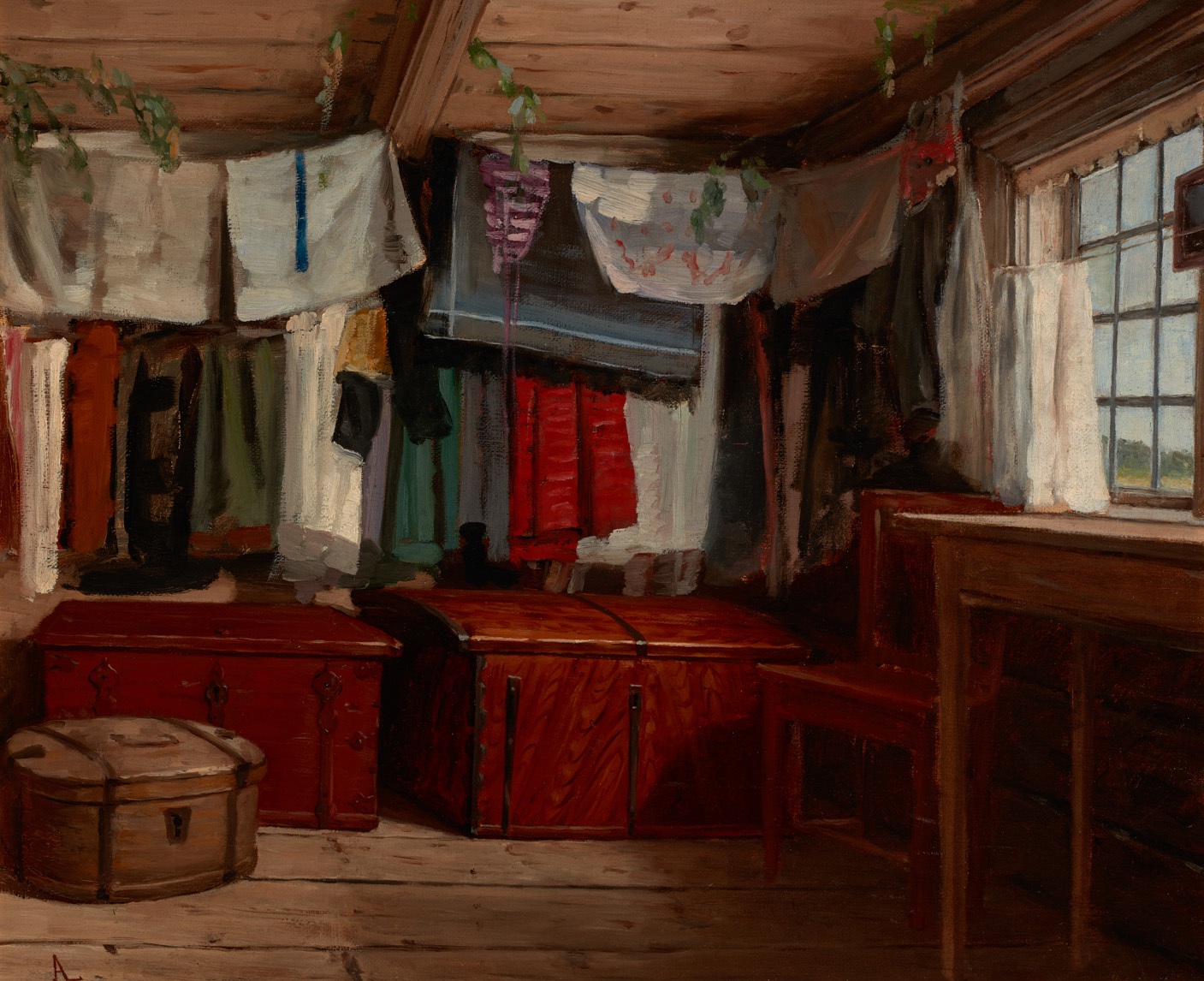
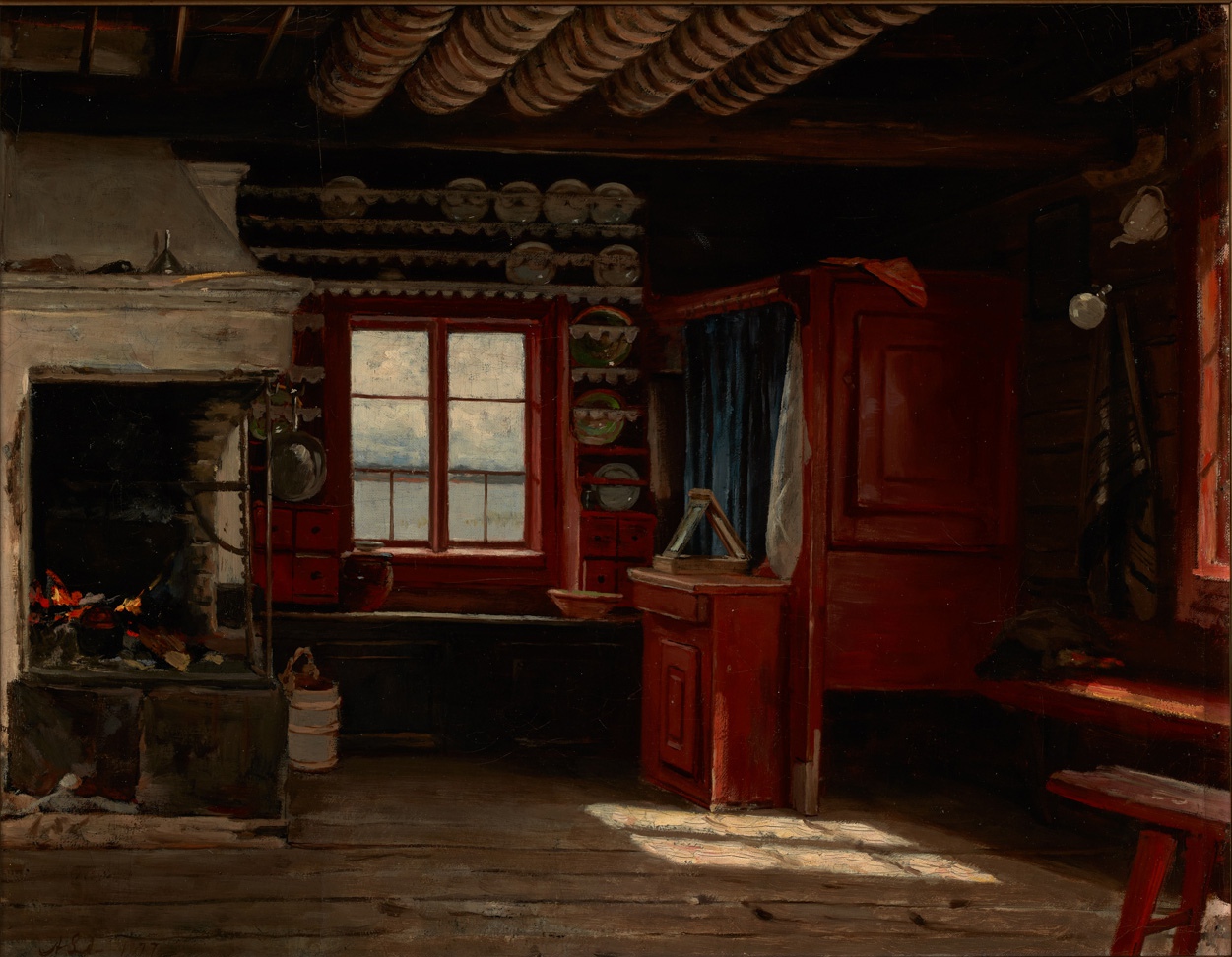
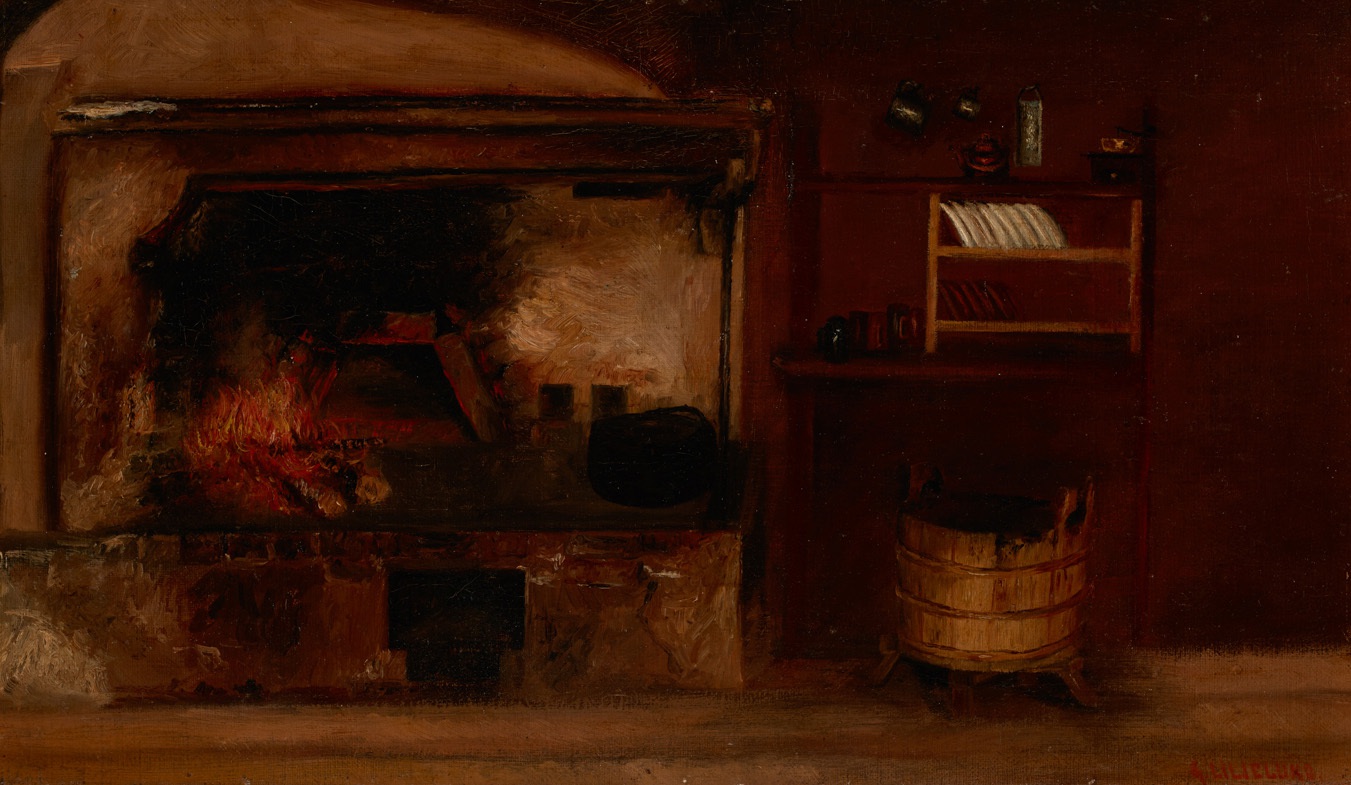
S.A. Keinänen (1841-1914)
Sigfrid August Keinänen was born on 7 February 1841 in Kuopio. His father was a carpenter. Sigfrid worked as a timber builder and dyer. In 1863, he went to study at the seminary in Jyväskylä, graduating in 1867, and then went to Helsinki to study at the Finnish Art Society’s School of Drawing. Keinänen organised the first art exhibition in Jyväskylä to raise funds for studying abroad. He studied at the Royal Academy of Fine Arts in Copenhagen and at the Royal Academy of Fine Arts in Stockholm from 1869 to 1872.
Keinänen was a teacher of drawing from 1872. Between 1887 and 1888, he worked in Italy and Paris. In 1877, he won second prize in a ducat competition. He was elected an honorary member of the Artists’ Association of Finland in 1914.
Keinänen initially painted in the style of the Düsseldorf School, although he had not actually studied in Düsseldorf. In addition to rural subjects, Keinänen did Kalevala-themed paintings and made a series of lithographs for the work Kuvia Kalevalasta (Pictures from Kalevala). Later, Keinänen moved to a more realistic style of painting and pastel-shaded landscape paintings.
Keinänen spent his summers travelling around the Karelian Isthmus collecting subjects for his paintings. These paintings were like sketches. Most of the paintings acquired for the collection are sketches and also documents of folk costumes. Here are four different women’s outfits from Karelia. They are very realistic portraits of local people in festive costumes. The actual national costumes of the various localities were designed and assembled later, in the 20th century, based on existing information. In many cases, the National Museum of Finland’s collections of objects and documentary images such as these served as a source of information for costume designers. The collection includes 17 paintings of costumes.
The final presentation is of Keinänen’s only work in the ethnographic collections that is neither a draft nor a sketch but a complete work, Kehdossa (in a cradle).
Select an image for more information
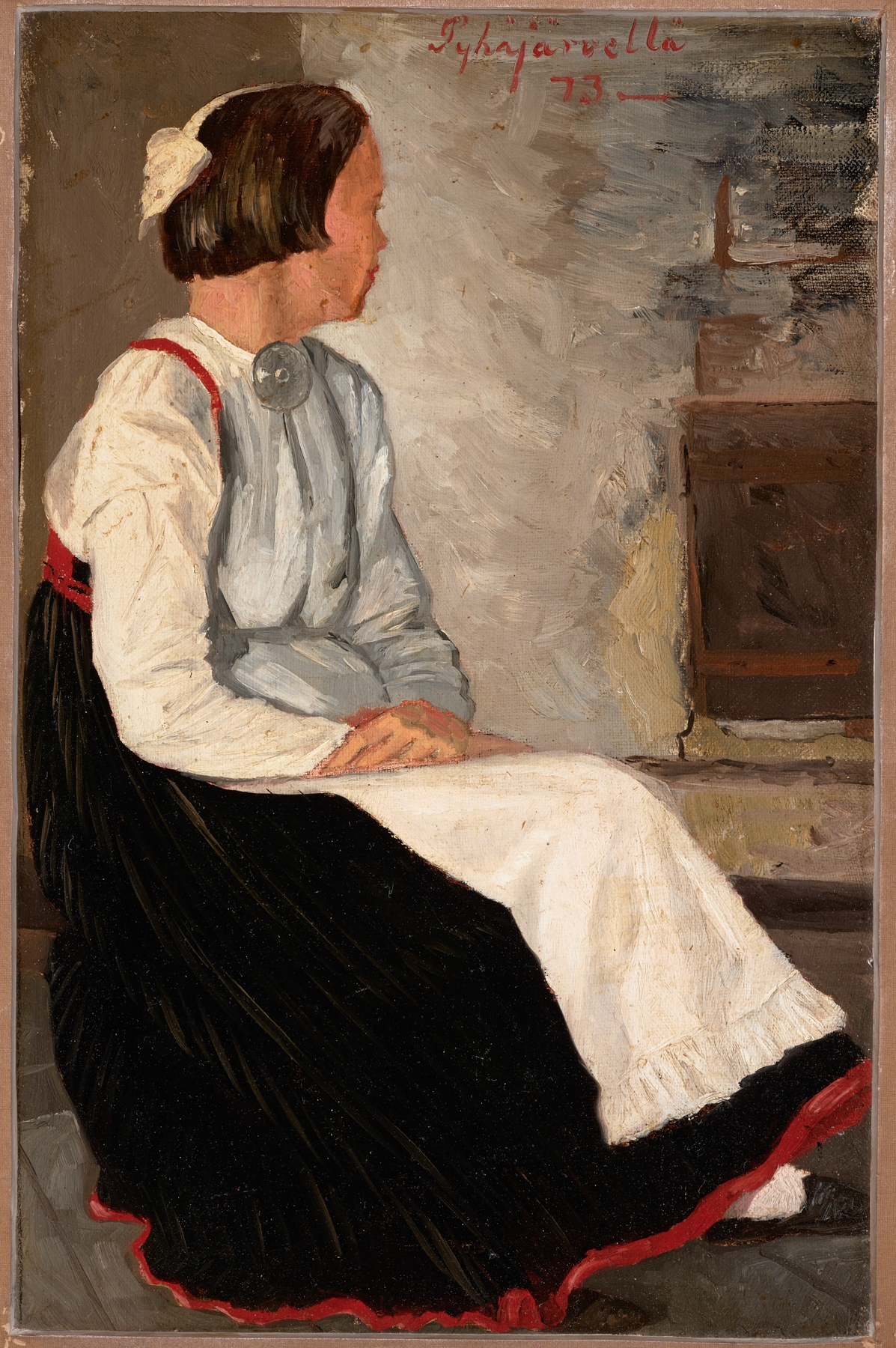
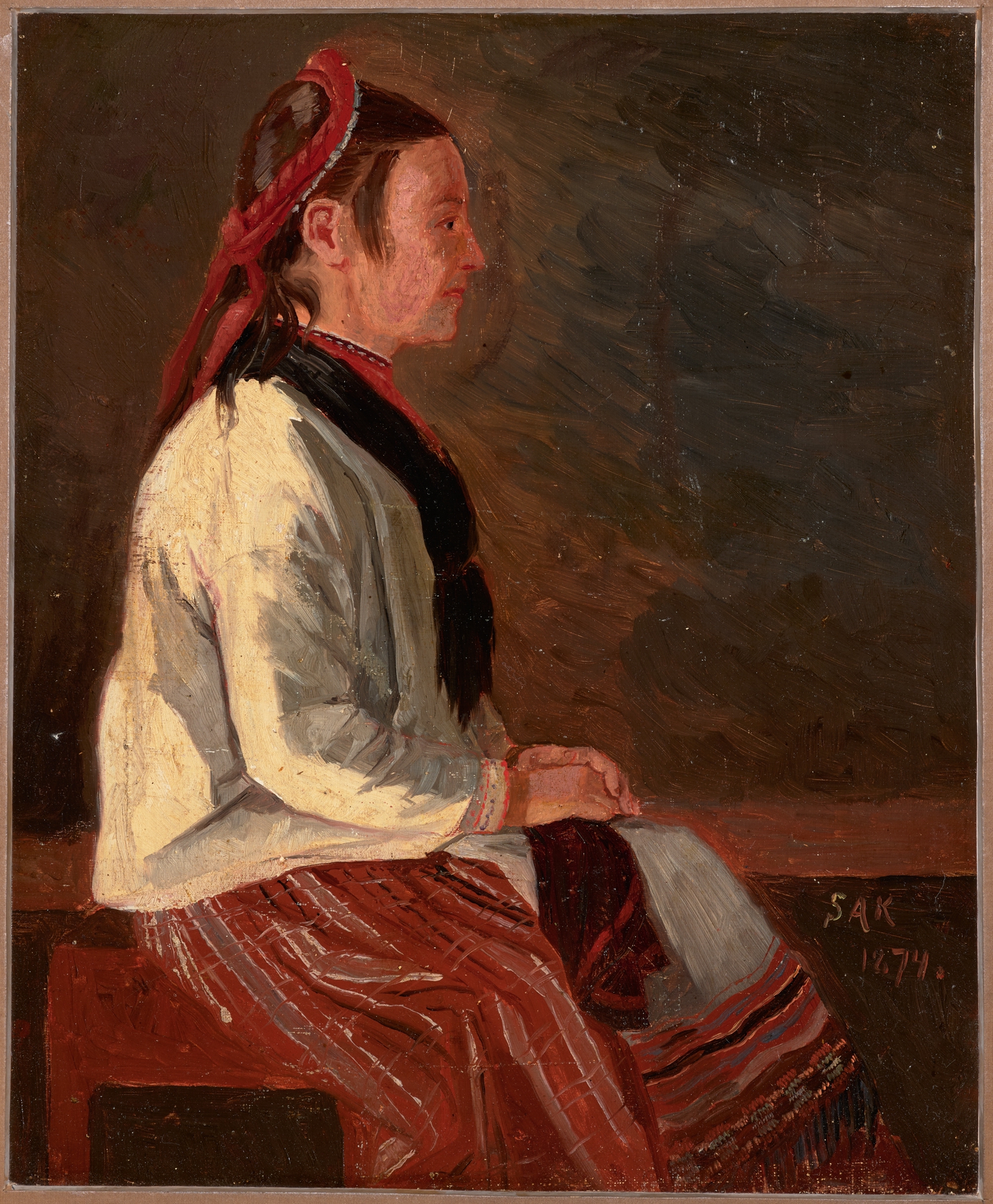
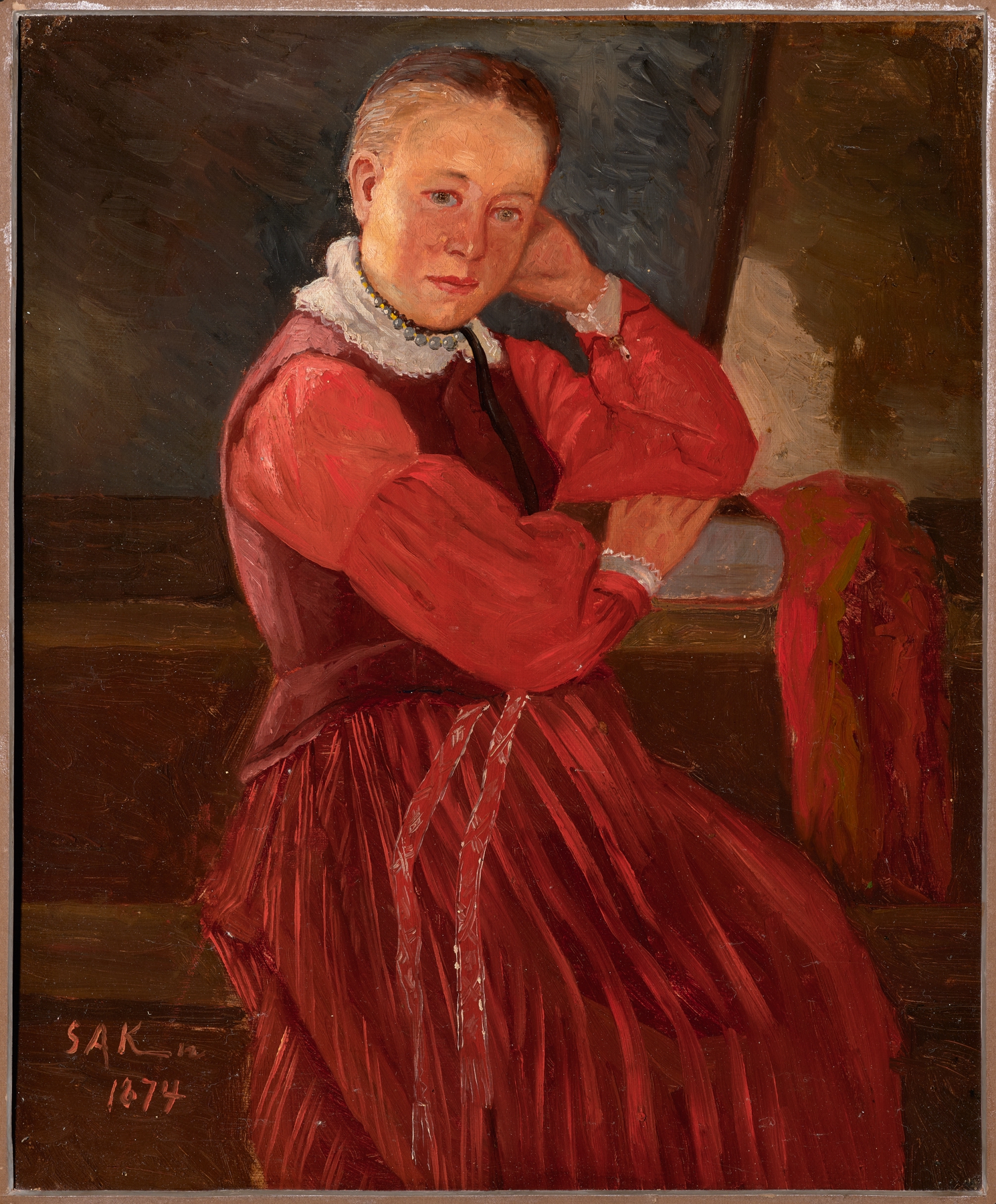
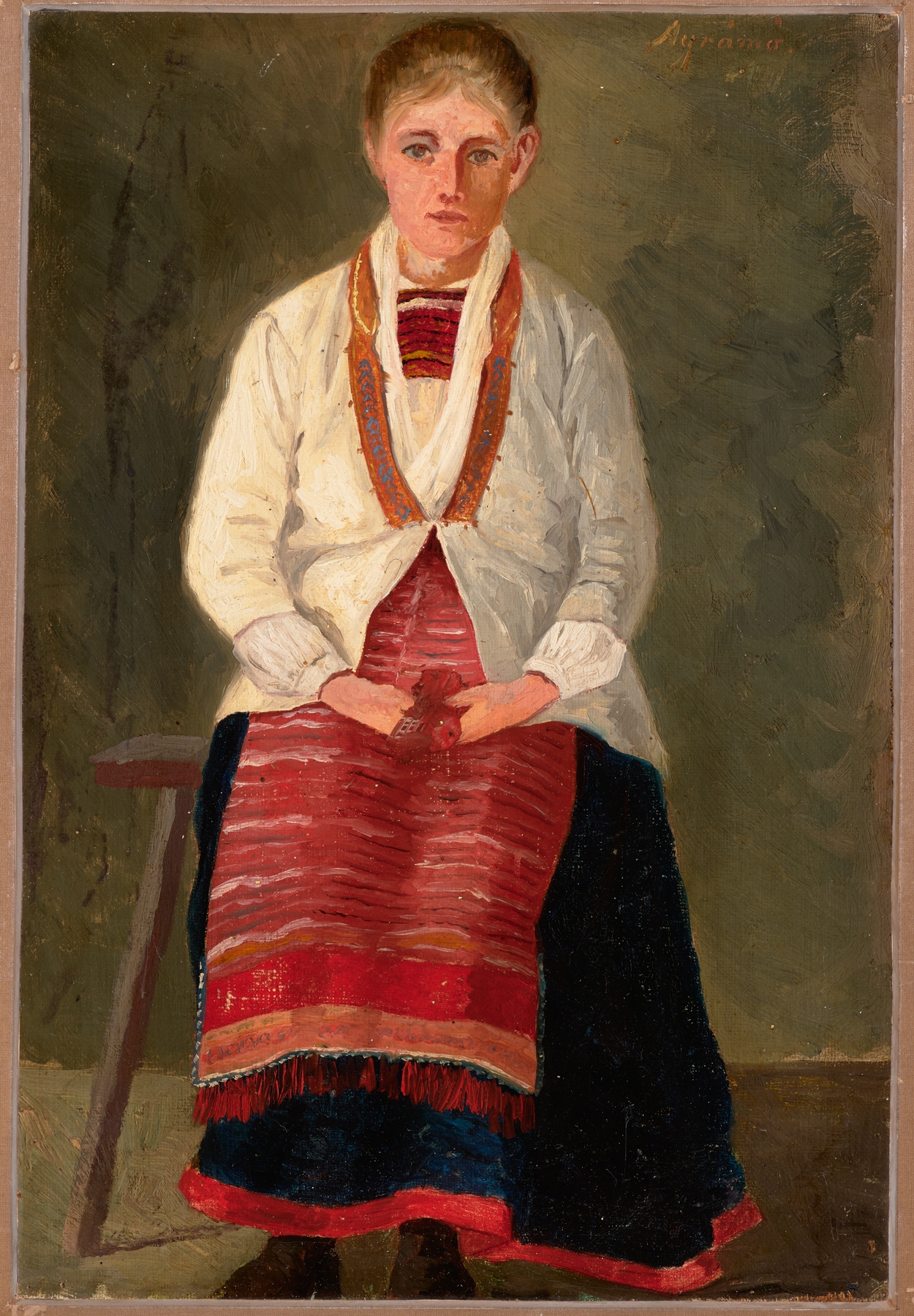
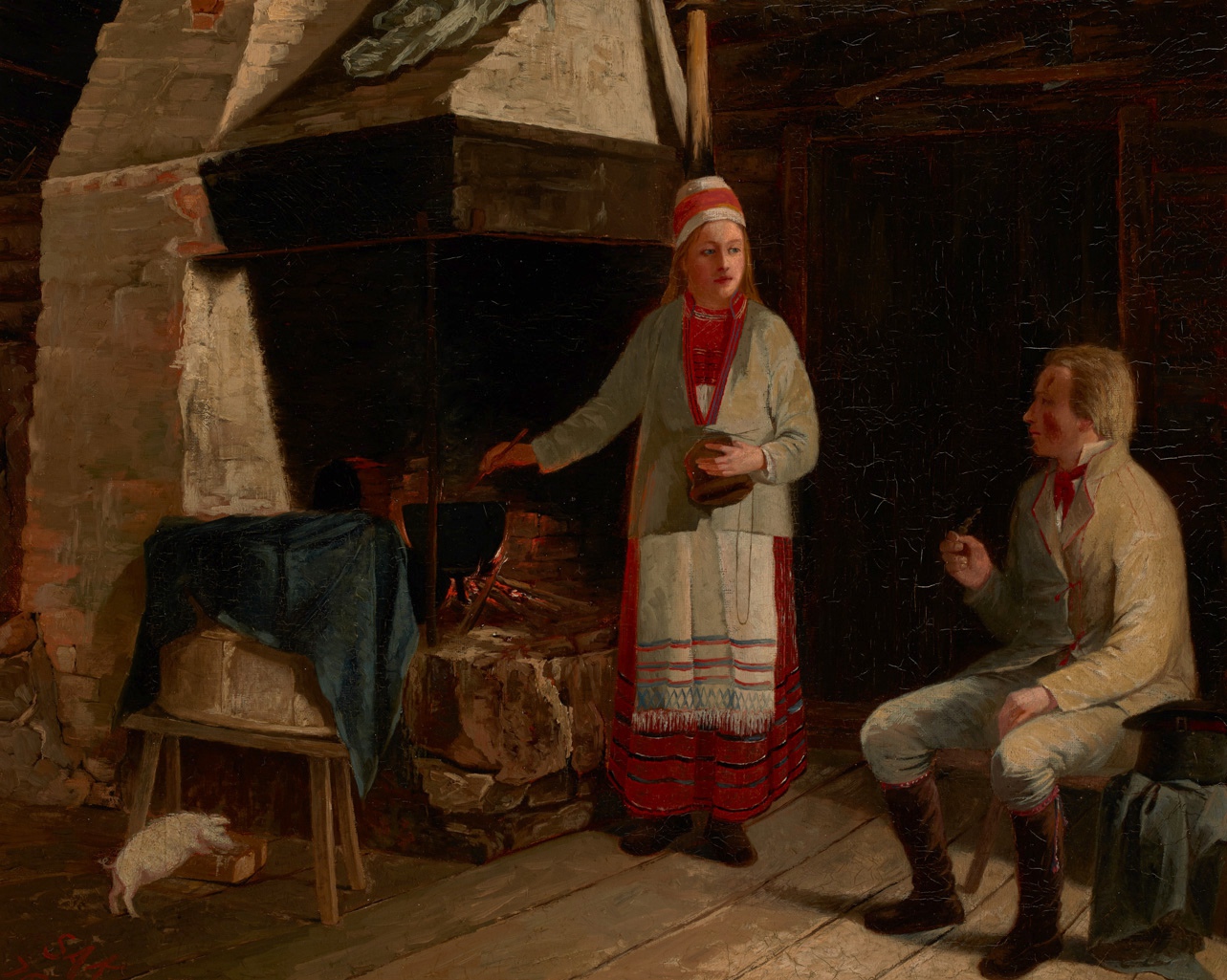
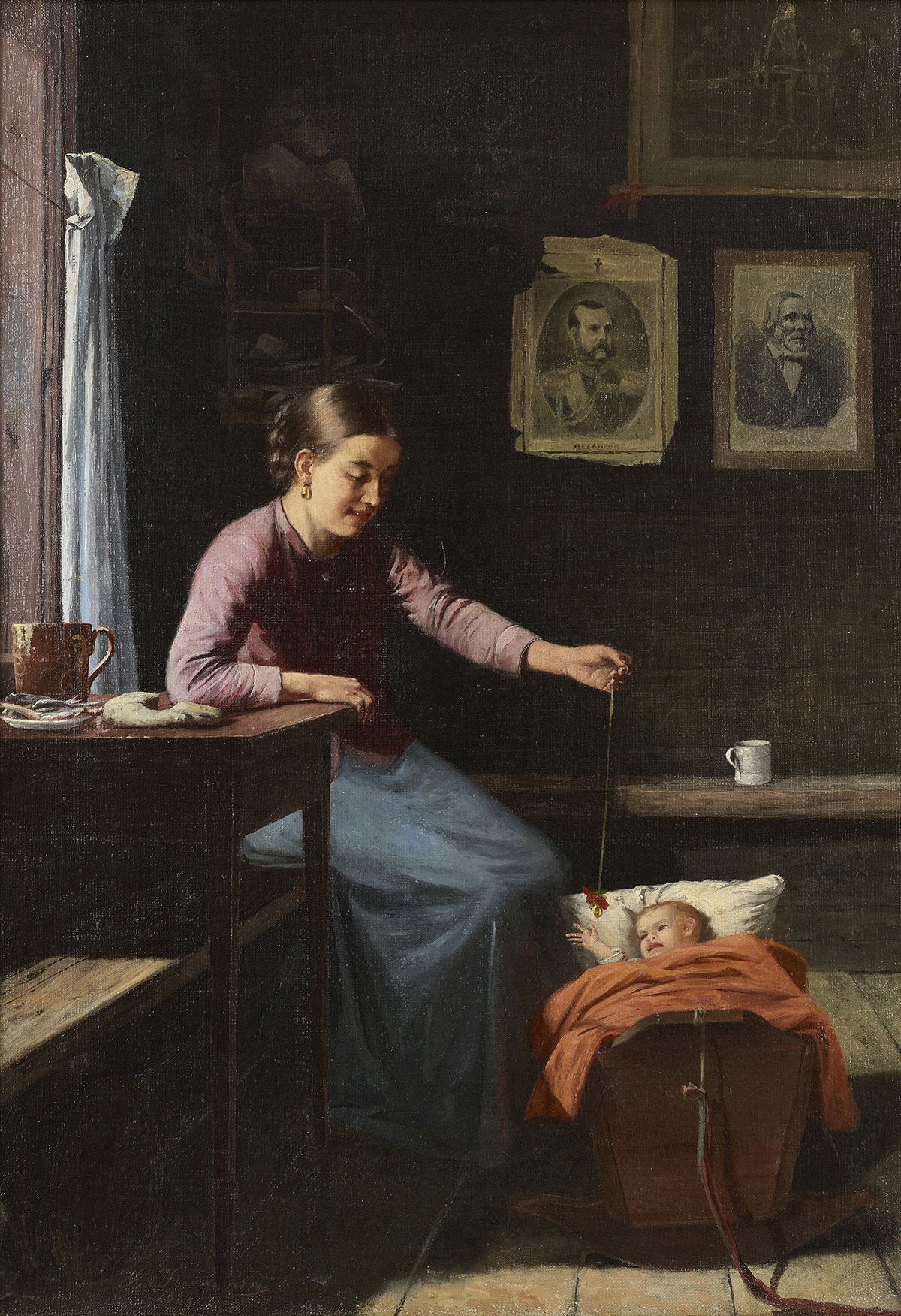
Th. Waenerberg ( 1846-1917)
Thorsten Adolf Waenerberg was born on 25 May in Porvoo. His parents were theological doctor Gabriel Mauritz Waenerberg and Agata Sofia Aschan. Thorsten graduated from secondary school and went on to study at the Finnish Art Society’s School of Drawing. In 1867–1870, he studied at the Düsseldorf Academy of Fine Arts and later in Paris. Thorsten was a teacher and director of the Turku School of Drawing from 1874 to 1887 and curator of the collections of the Finnish Art Society from 1887 to 1914.
Waenerberg painted mostly Suursaari seascapes and especially landscapes. Painting eventually took a back seat as he concentrated on his work as curator of the Finnish Art Society’s collections and as an organiser of art exhibitions.
Most of the paintings below depict cottage interiors from Säkylä from 1876. The paintings are sketches. The Säkylä cottage had become a popular and fashionable subject among artists, as it had been shown in two different sets at the Finnish Universal Exhibition in Kaivopuisto Park in Helsinki in 1876. A great many artists working at the time painted a work on the theme of the Säkylä cottage. It would be interesting to know what the staged interior shown at the exhibition actually looked like. How many people painted a view of the real cottage in Säkylä and how many painted a version of the staged interior shown at the Kaivopuisto exhibition? In any case, with the exhibition and the artists’ works and postcards, the Säkylä cottage became a kind of symbol of the entire Western Finnish peasant culture.
Select an image for more information
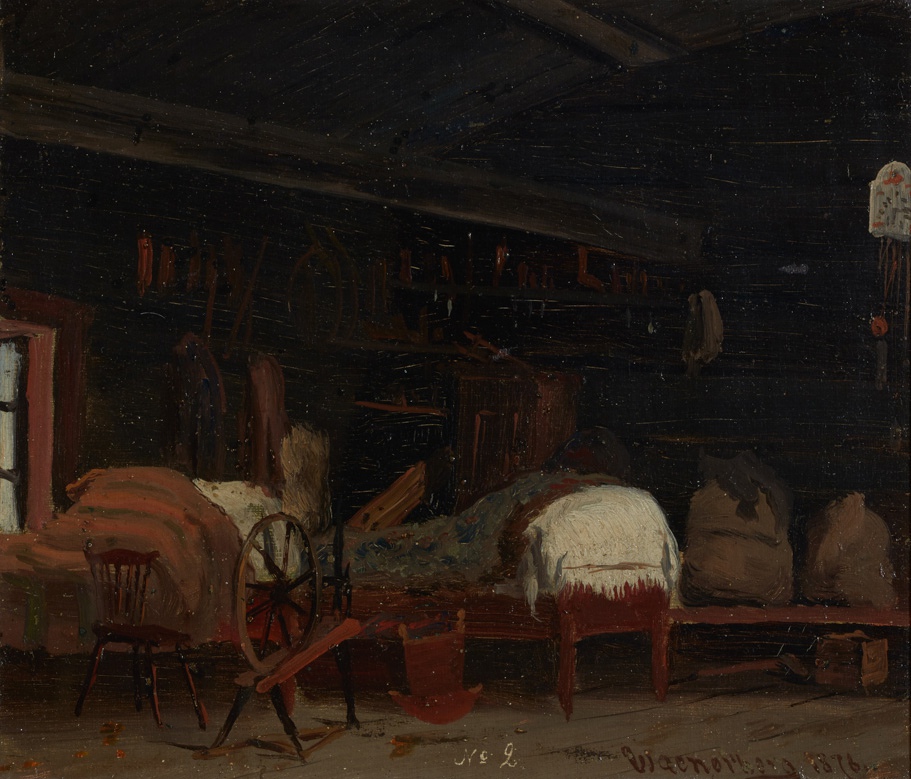
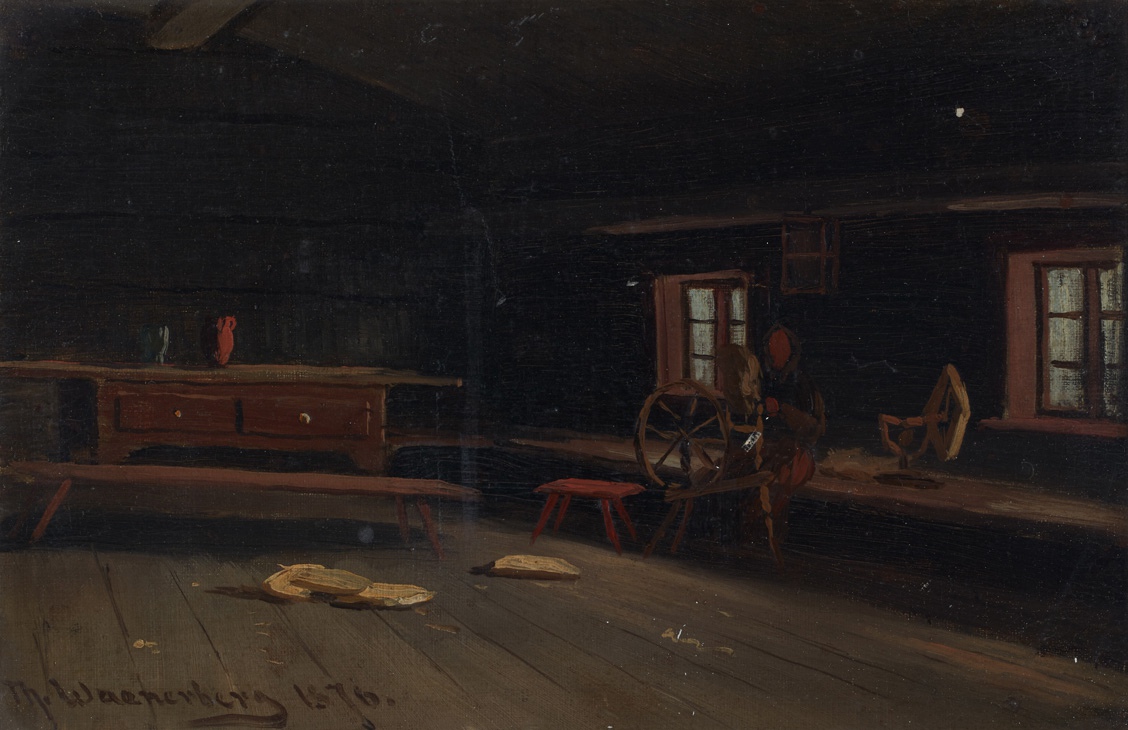
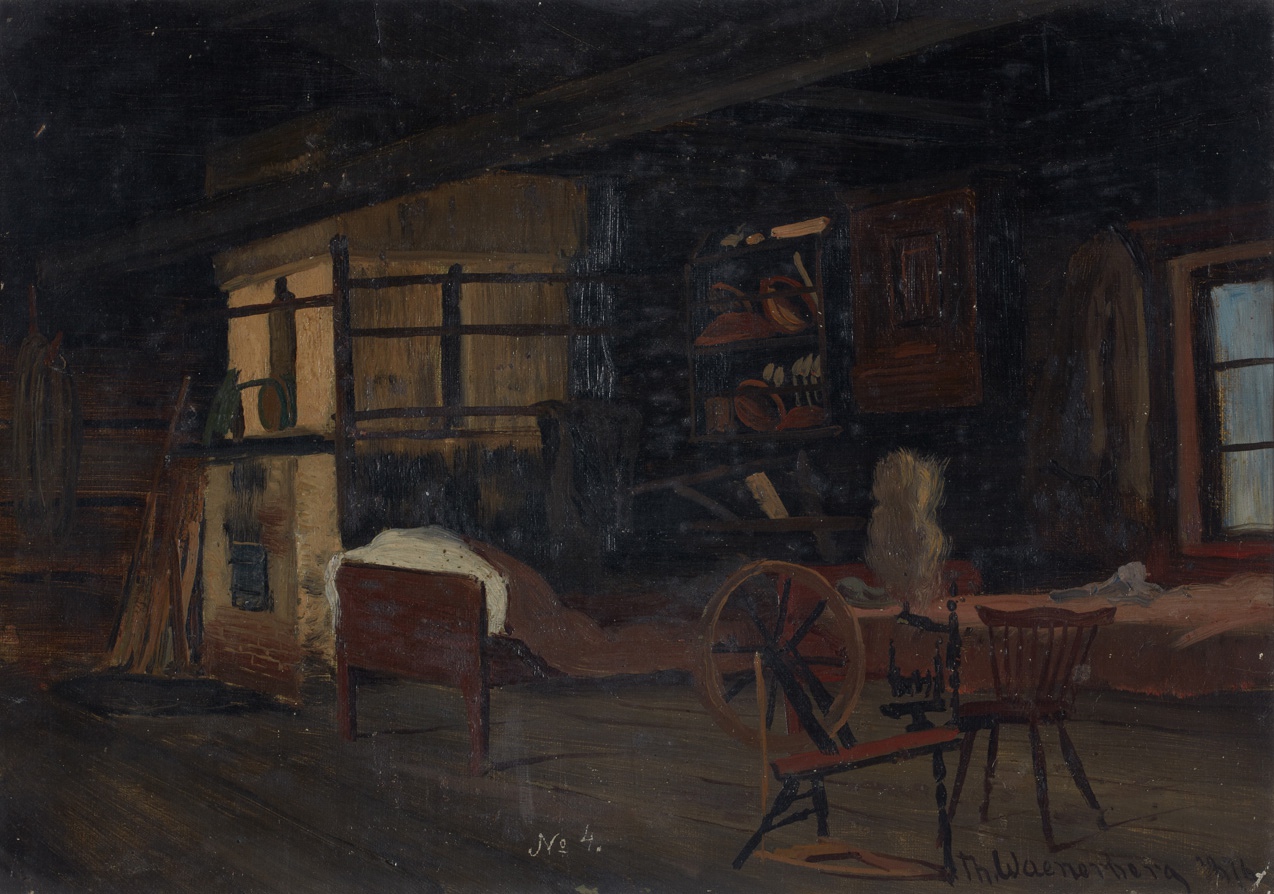
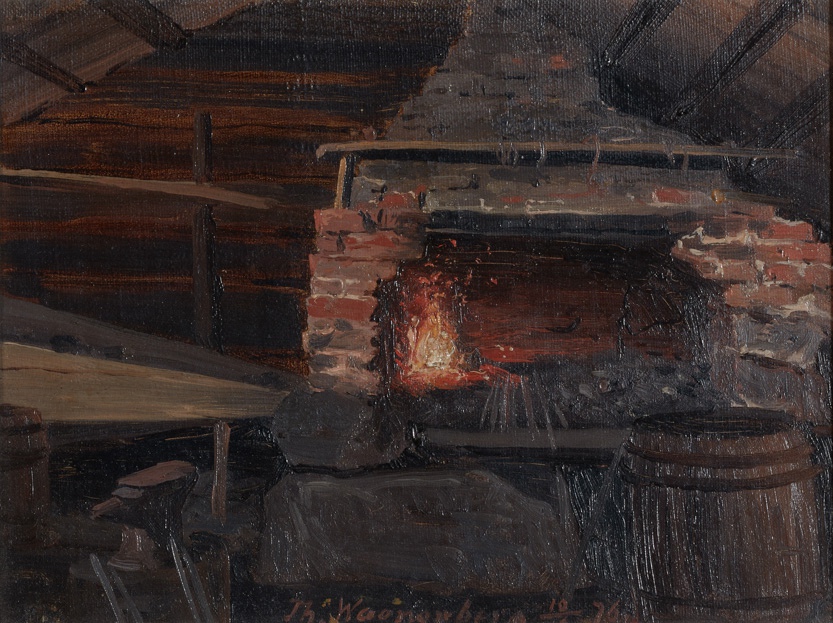
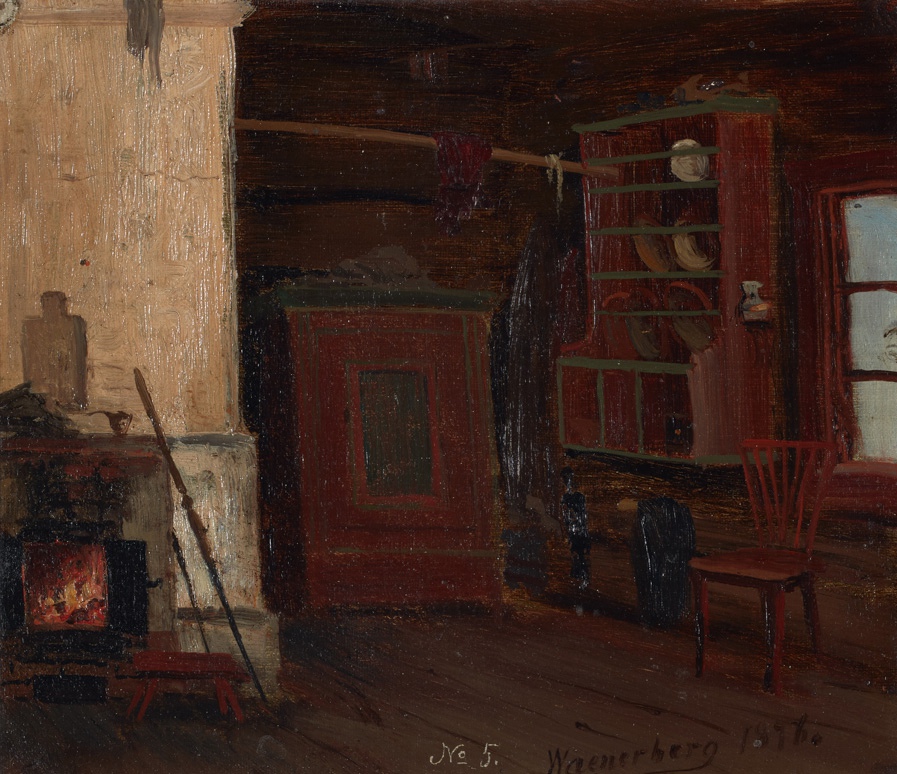
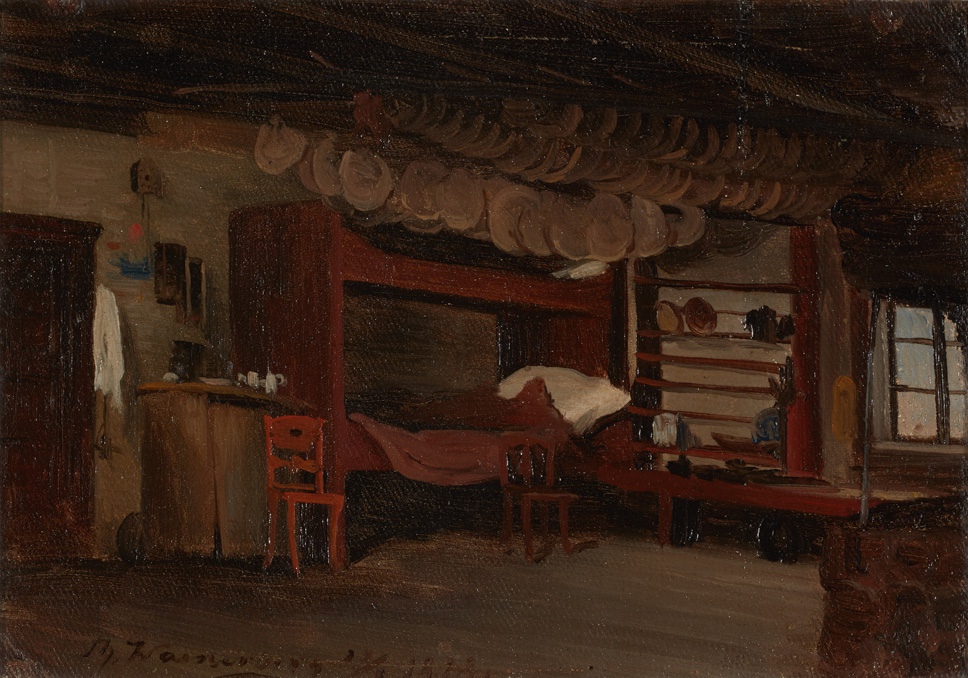
The material was compiled by Nina Repo, curator of the Ethnographic Collection
For more on this topic, see:
Ars: Suomen taide 3. 1989: A. Reitala, Maalaustaide 1860–1880.
Kataja, Raila. Object of the Month 2014, Runonlaulajat. https://www.kansallismuseo.fi/en/collections/items-of-the-month
Koskimies-Envall, Marianne. Vaurastuva kansakunta kuvina (pictures of a nation growing prosperous). Arvid Liljelund, hänen laatukuvamaalauksensa, niiden todellisuuspohja ja vastaanotto (his quality paintings, their reality base and reception). W. Hagelstam, Vaasa, 1998.
Lehtinen, Ildiko, Sihvo, Pirkko. Rahwaan puku, Folk costume. Publications of the National Board of Antiquities, Vammala 2005.
Schvindt, Theodor. Catalogue of the ethnographic collections of Finnish student unions, first booklet. Helsinki 1883.
Talvio, Tuukka. 4 / National Museum of Finland, Ikkuna menneeseen ja tulevaan (window to the past and future). Publications of the National Board of Antiquities, 2016.
Valkeapää, Leena. Suomen muinaismuistoyhdistyksen taidehistorialliset tutkimusretket Suomessa (art historical expeditions of the Finnish Antiquarian Society in Finland) 1871–1902. 18 Tahiti 1/2018. https://tahiti.journal.fi
Kustavi Grotenfelt: Kahdeksantoista runoniekkaa (18 poets). Valikoima Korhosen, Lyytisen, Makkosen, Kymäläisen, Puhakan, Räikkösen y.m. runoja ja lauluja (selection of poems and songs by Korhonen, Lyytinen, Makkonen, Kymäläinen, Puhakka, Räikkönen et al.) Printed by SKS 1889 (as e-text on Project Lönnrot’s page














